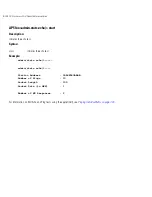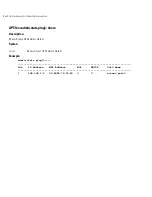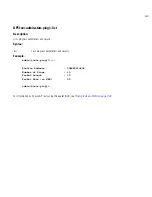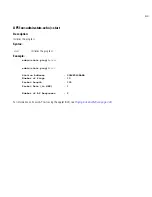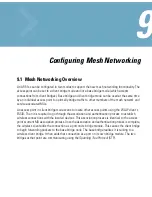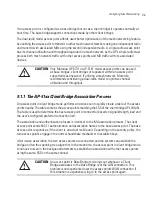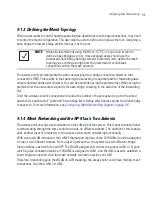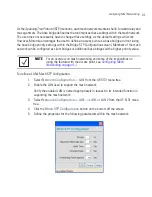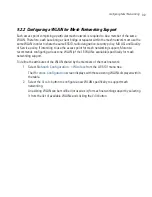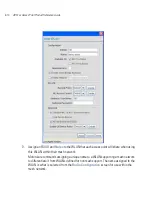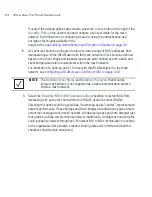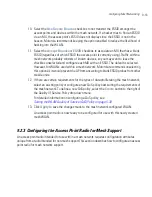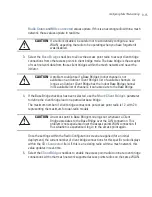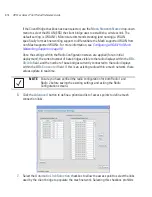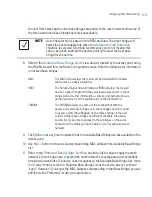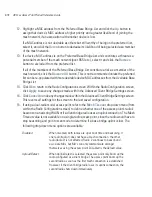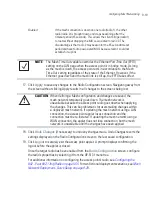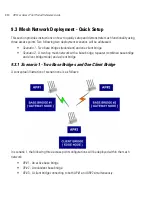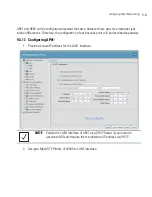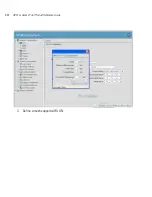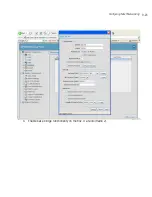
AP-51xx Access Point Product Reference Guide
9-8
6.
Click
OK
to return to either the LAN1 or LAN2 screen where updates to the Mesh STP
Configuration can be saved by clicking the
Apply
button.
7.
Click
Cancel
to discard the changes made to the Mesh STP Configuration and return to
the LAN1 or LAN2 screen. Once the Mesh STP Configuration is defined, the access
point’s radio can be configured for base and/or client bridge support.
Priority
Set the
Priority
as low as possible for a to force other devices
within the mesh network to defer to this client bridge as the bridge
defining the mesh configuration (commonly referred to as the root).
Motorola recommends assigning a Base Bridge AP with the lowest
bridge priority so it becomes the root in the STP. If a root already
exists, set the Bridge Priorities of new APs accordingly so the root
of the STP doesn't get altered. Each access point starts with a
default bridge priority of 32768.
Maximum Message
age
The
Maximum Message age
timer is used with the Message
Age timer. The Message Age timer is used to measure the age of
the received protocol information recorded for a port, and to ensure
the information is discarded when it exceeds the value set for the
Maximum Message age timer.
Hello Time
The
Hello Time
is the time between each bridge protocol data unit
sent. This time is equal to 2 seconds (sec) by default, but you can
tune the time to be between 1 and 10 sec. If you drop the hello time
from 2 sec to 1 sec, you double the number of bridge protocol data
units sent/received by each bridge. The 802.1d specification
recommends the Hello Time be set to a value less than half of the
Max Message age value.
Forward Delay
The
Forward Delay
is the time spent in the listening and learning
state. This time is equal to 15 sec by default, but you can tune the
time to be between 4 and 30 sec. The 802.1d specification
recommends the Forward Delay be set to a value greater than half
the Max Message age timeout value.
Forwarding Table
Ageout
The Forwarding Table Parameter value defines the length of time
an entry will remain in the a bridge’s forwarding table before being
deleted due to lack of activity. If the entry replenishments a
destination generating continuous traffic, this timeout value will
never be invoked. However, if the destination becomes idle, the
timeout value represents the length of time that must be exceeded
before an entry is deleted from the forwarding table.
Summary of Contents for AP 5131 - Wireless Access Point
Page 1: ...AP 51xx Access Point Product Reference Guide ...
Page 3: ...AP 51xx Access Point Product Reference Guide 72E 103901 01 January 2008 ...
Page 4: ......
Page 44: ...AP 51xx Access Point Product Reference Guide 1 28 ...
Page 76: ...AP 51xx Access Point Product Reference Guide 2 32 ...
Page 92: ...AP 51xx Access Point Product Reference Guide 3 16 ...
Page 588: ...AP 51xx Access Point Product Reference Guide 8 254 ...
Page 610: ...AP 51xx Access Point Product Reference Guide 9 22 3 Define a mesh supported WLAN ...
Page 623: ...Configuring Mesh Networking 9 35 3 Determine the Radio MAC Address and BSSID MAC Addresses ...
Page 653: ...Adaptive AP 10 25 line con 0 line vty 0 24 end ...
Page 654: ...AP 51xx Access Point Product Reference Guide 10 26 ...
Page 666: ...AP 51xx Access Point Product Reference Guide A 12 ...
Page 690: ...AP 51xx Access Point Product Reference Guide C 4 ...
Page 696: ...AP 51xx Access Point Product Reference Guide IN 10 ...
Page 697: ......

